News
Power plant at Sampur a non-starter
View(s):The siting of the Sampur Power Plant seems to be unsuitable with its Environmental Impact Assessment (EIA) being rejected twice and the third amended EIA report being currently scrutinised by the Central Environment Authority (CEA).
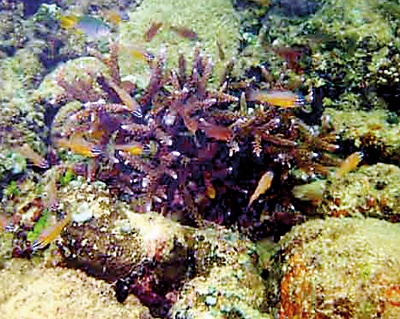
Acroporaformosa
India’s media reported that Sri Lanka has requested India to consider relocation of the coal power plant being planned to be built at Sampur in Trincomalee.
The possible environmental impact of this power plant on marine life appears to be a cause of concern.
The power plant is expected to operate two generators adding 500 MW of electricity to the national grid. For the operation of a coal fired thermal power plant, water in large quantities is a necessity.
The proposed power plant is estimated to use as much as 90,000 m3 (cubic metres) of water per hour to generate steam as well as for cooling the system after the electricity is generated.
It is planned to use sea water sucked in from Koddiyar Bay through a 2.6 metre diameter pipeline large enough for a man to walk inside it. The water used to cool the system is then to be discharged into Shell Bay – a biodiversity rich area.
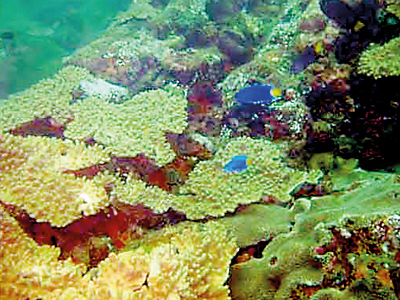
Sinulariasp
The discharging of as much as 90,000m3/h of water is predicted to be a problem as the water so discharged will be at a higher temperature than the normal sea water.
It is predicted that the water so discharged will be about 4 degrees Celsius higher.
The Environmental Impact Assessment (EIA) using computer generated models show that this discharge would not be a problem, but discharging of such a large volume with a higher temperature for 24 hours a day and 7 days a week worries concerned scientists.
This is particularly detrimental to the area as Shell Bay has a high biodiversity. A study conducted by National Aquatic Resources and Development Agency (NARA) shows there are 56 hard coral species, 160 of coral associated fish species and many other invertebrates living in Shell Bay.
| Relocation due to return of IDPs Indian media reported that Prime Minister Ranil Wickremesinghe has requested India to consider relocating the coal power plant that is being planned to be built at Sampur, Trincomalee. There were environmental concerns over building a coal power plant in Sampur. However, the main reason for the Government to request the relocation of the plant is believed to be a social issue where the Government itself started to resettle displaced people in Sampur. President Maithripala Sirisena inaugurated this exercise last August handing over the deeds to a selected group of occupants. The unfavourable impact of a coal power plant has been a major worry for the people who are waiting to come back to their land in Sampur. They fear their precious agricultural lands are contaminated and the air they breathe would be polluted. When the Sunday Times queried about this news report from the CEB Director General Nihal Wickrramasooriya he said he has no information about such a plan. |
The area has also got its name due to large volumes of shells washed ashore indicating the area is rich in these shells’ live bearers. A rare creature that can be found in Shell Bay is the giant clam.
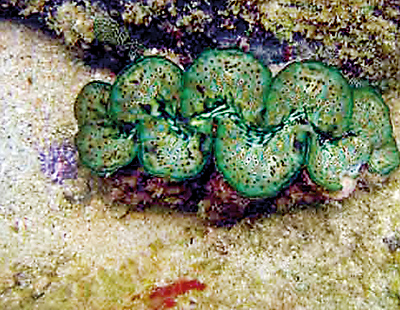
App size 15cm
It is known that even a slight temperature rise can damage corals by triggering bleaching. Despite results obtained on computer generated models, if the temperature in the sea water continues to increase, it could impact a large area.
Not only the temperature, it is fear that the discharging water can be contaminated with sulfur emissions from the burning coal and heavy metals such as mercury.
Chlorine too will be used to clean the water and if discharged without treating, it can first impact on tiny organisms like planktons and can have a chain impact making a collectively bigger impact in the long run, is the fear o f biologists.
Such pollution is not only impacted on the bio diversity of the Shell Bay but also there is a risk of health impacts on the human beings from such heavy metals through food chains.
The Mahaweli Ganga also exits to the sea nearby bringing a high nutrient concentration and all these factors contribute to make Trincomalee Bay a unique ecosystem with high biodiversity ranging from tiny organisms to large whales.
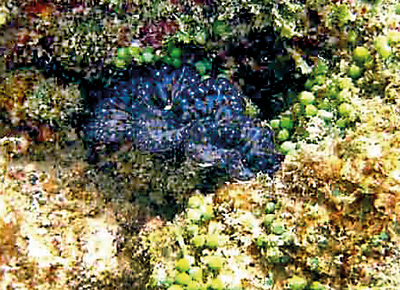
App size 8 cm
“If the discharge of water is done in a careless manner, it can impact on this environmentally sensitive area” warns Dr.Hiran Jayewardene – former chairman of NARA.
He pointed out the need for doing the Environmental Impact Assessments with care, so that the project will not damage the environment.
The Sampur Power Plant did not have a proper assessment from the start. Its first EIA was submitted on August 2012 and was rejected due to being inadequate in several aspects.
The Trincomalee Power Company Ltd (TPCL) which is a joint venture between India’s National Thermal Power Corporation Limited (NTPC) and Sri Lanka’s Ceylon Electricity Board (CEB) has resubmitted another EIA in April 2014 with amendments.
But this EIA too was found not adequate enough and it compelled the Indian consultancy firm ManTec to employ local scientists as well. The EIA was submitted in February 2015 for the third time and is being currently reviewed by a Technical Evaluation Committee.
Cooling the heated water to the sea temperature or extending the pipeline and discharging the water further into the open sea are suggested as solutions for this issue, but this will add an additional cost which at present is estimated at US$ 512 million.
The Sunday Times query sent to India’s NTPC’s general e-mail asking whether it is considering mechanisms to cool down the heated water to the sea temperature and the company’s willingness to implement such a solution has not been answered up to Friday evening.
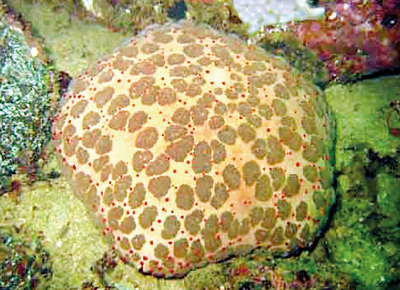
Pictures illustrate the high biodiversity of Shell Bay
It is also claimed that discharging these water to the Eastern side too will not be a solution as eventhough corals in those areas could be degraded, new corals can come up on top of those dead corals as they need a hard substrate.
However, a news report published in the Island newspaper in May 2015 quotes TPCL Managing Director Sanjeev Kishore as saying most of the complaints lodged against the current EIA by the public were baseless and the majority of them were repetitions.
Mr. Kishore said the company would correct the misconception that the plant would be similar to a nuclear plant and consequences of an accident would be similar, the news report further mentioned.
The Sunday Times also contacted Prof. O. Illeperuma to know about the possible air pollution impact.
He said there are mechanisms to contain the pollution by coal power and it is very important to first scrutinise whether these methods would be set up and secondly, do continuous monitoring of their functioning to prevent air pollution.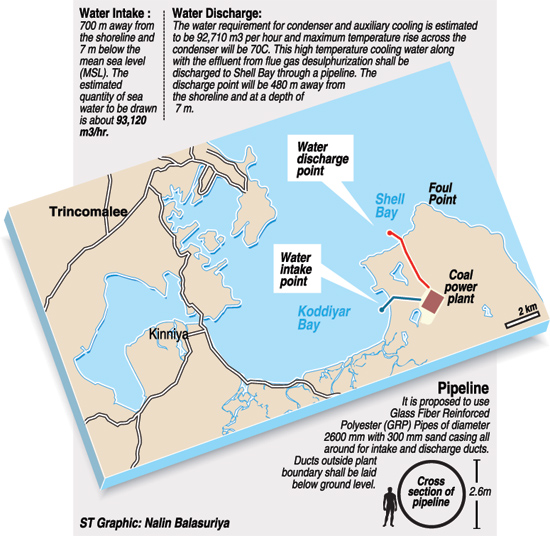
However there is another issue as the present EIA has been done before the Government’s decision of resettlement of people in the area.
Hence it may also need a re-evaluation in the present EIA on the air pollution radius, experts point out.
Central Environment Authority Chairman Prof. Lal Mervyn Dharmasiri said the technical evaluation of the Sampur Power Plant EIA is being done. He said the evaluation is thorough and the results will be released soon.
| How a coal power plant works In a thermal power plant, large volumes of cleaned water are being heated by burning coal. This process converts the water to steam which is discharged through nozzles on to the turbine blades making the turbines rotate which in turn rotates the electricity generator. The steam is then passed through a condenser that contains tubes through which cold water is constantly pumped. The steam passing around the tubes of the condenser loses heat and condenses as water. During this process, the steam gets cooled while cooling water gets heated up. This warm water can be discharged into a natural water body for cooling (once through cooling system) or it may be cooled in a cooling tower and recycled for the cooling (closed cycle cooling system). http://www.ntpc.co.in/en/contact-us |

